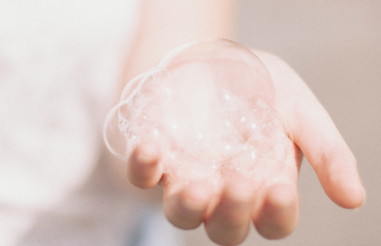Soaps are one of the most popular products in the world, and for good reason. They’re easy to use, smell great, and often leave your skin feeling soft and smooth. Although they’re seemingly simple, soap making is actually a complex process that requires a lot of ingredients and technology. In this blog post, we’ll take a look at 10 things no one tells you about how soaps are made. From raw materials to the final product, read on to learn more about this fascinating industry.
The Manufacturing Process of Soaps
The manufacturing process of soaps is a complex and fascinating process that involves many steps and stages. Here we’ll take a look at the main steps involved in soapmaking, and some of the unique aspects of this fascinating process.
Soapmaking starts with the extraction of raw materials, which can be either plant or animal based. These raw materials are then combined together to create a soap base, which is essentially a mixture of oil, water, and soap powder. The soap base is then heated until it reaches its boiling point, which causes the oil to break down and the water to vaporize. This vaporized water forms bubbles that rise to the surface of the soap base, where they are captured by heat exchangers known as blowers. The blowers then force these bubbles through tubes called spindles in order to produce bars of soap.
Glycerin and Other Ingredients in Soaps
Glycerin is a key ingredient in soaps. It helps to remove oils and dirt from the skin while maintaining a soft, smooth feel. Other ingredients in soaps can include milk, potassium hydroxide (a soap-making agent), and sodium sulfate (a 12% solution of salt).
Soaps are typically made up of a base such as glycerin, water, oils, and salts. These ingredients are mixed together and heated until the soap mixture thickens. In some cases, other ingredients such as essential oils or botanical extracts may be added.
The Chemistry of Soapmaking
Soap is more than just a bar of soap. It’s a chemical reaction between fats and water. There are three main types of soap: lye, alkali, and caustic.
Lye Soap
The lye in soap is what makes it go through the chemical reaction. You can make lye soap by combining potassium hydroxide (KOH) with water. The degree to which the KOH is mixed with water determines the strength of the soap. When used in high concentrations, lye soaps can be caustic and cause skin irritation.
Alkali Soap
An alkali soap contains an alkaline substance like sodium hydroxide (NaOH). This type of soap doesn’t contain any lye, so it doesn’t cause skin irritation. Alkali soaps are also less caustic than lye soaps.
Caustic Soap
Caustic soaps are made from acids like sulfur dioxide (SO2). These soaps are usually less harsh on the skin than other types of soaps and are ideal for people with sensitive skin or those who have allergies to chemicals.
The Risks of Soapmaking
Soaps are made by a process called saponification, which is the conversion of oils into soap. This process can be dangerous if not done correctly, as it can produce harmful compounds. Here are some of the risks involved in soapmaking:
1. Soapmakers can be exposed to harmful chemicals when making soaps. Some of these chemicals include hydrogen sulfide, ammonia, and carbon dioxide. These chemicals can cause serious health problems if inhaled or ingested, including death.
2. Soapmakers can also be exposed to fire hazards when making soaps. Soapmaking requires a high degree of heat and often produces flames, which could easily ignite materials nearby.
3. Soapmakers can also be injured while making soaps. As mentioned earlier, soapmaking requires a high degree of heat and often produces flames. This means that soapmakers are at risk of burns and other injuries during the process.
The Environmental Impact of Soapmaking
The environmental impact of soapmaking is significant, and can be seen in a number of ways. The manufacture of soap leads to the release of volatile organic compounds (VOCs), including benzene, formaldehyde, and propylene oxide. These VOCs can cause health problems if inhaled or ingested, and have been linked to climate change. Soap also requires a large amount of water to produce, which can lead to water shortages in areas where it’s produced.
Soap labeling laws
Soap labeling laws are determined by the country in which the product is sold. In general, there are two types of soap labeling laws: mandatory and voluntary.
Mandatory labeling laws require all soaps to be labeled with their ingredients. Voluntary labeling laws allow companies to choose whether or not to label their soaps with their ingredients.
There are a few different types of ingredients that can be found in soaps. The most common type of ingredient is water, followed by oils and fats. Soapmakers also use other ingredients, such as fragrances, colorants, and detergents to give their products different characteristics.
Soapmakers must list each ingredient on their labels, no matter how small the amount is. Smaller companies may have more difficulty meeting this requirement, since it can be difficult to track down every single ingredient in a product.
When it comes to soap labelling laws, each country has its own set of regulations. For example, some countries require all soaps to include a warning about potential skin irritation. Other countries do not require any warnings at all.
In general, voluntary labeling schemes are more common than mandatory ones throughout the world. This is because companies have more control over what information they want to include on their labels- including whether or not they want to include information about potential skin irritation.











